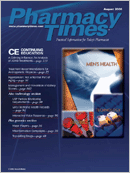Publication
Article
Pharmacy Times
Rx Abuse in Appalachia
Author(s):
The Roanoke Times recently reportedthat drug deaths in southwestVirginia had leveled off overthe past 3 years, with a total of 216 in2005. Most of these drug deaths wereattributable to prescription medications.These figures have tripled over the pastdecade, with numbers stabilizing at between200 and 220 over the past 3 years.The counties in southwest Virginia havebetween 2 to 5 times the statewide averagesfor drug deaths.
This area of the United States, whichalso includes parts of far eastern Kentuckyand western West Virginia, has longbeen a hotbed of prescription drug abuse.The 1990s saw a lucrative exchange ofoxycodone products, most notably Tylox(oxycodone and acetaminophen) capsulesthat could be abused by breakingthem open and snorting the narcotic toachieve the "high."
Appalachian residents would travelmany miles, even to our area in southwestOhio, to scam doctors and pharmaciststo obtain the red capsules for theirown addiction or resale in their part ofthe country. There has always beenmuch speculation as to why this ruralarea of the country had high rates ofaddiction to pharmaceuticals.
One of the most popular thoughts isavailability. Getting heroin and cocaine torural areas of the country, where peopleknow all their neighbors,is not an easytask and may notprove to be worthwhileto big-city dealersand their runners.This beautiful area ofthe country can be aseveral-hour drive offof interstate highways,with cell phone serviceoftentimes not available.This is likely not apositive environmentfor those wanting totraffic in illicit drugsand attempt to avoidlaw enforcement inthe process.
Residents in these regions work hardfor a living—maybe involving coal mining,logging, or farming. These are all occupationsprone to injury and pain, likely to berelieved by prescription drugs. The moreprescriptions written increase the potentialfor availability to those who wouldabuse or sell these drugs.
The possible factor here that cannotbe overlooked is the poverty that ispresent in this region of the UnitedStates. The availability of prescriptiondrugs and the lure for making a quickdollar is also likely a factor in the abuseand overdose death rate in this part ofAppalachia.
According to The Roanoke Times'article, the Virginia Medical Examiner'sOffice attributed 70 of the drug-relateddeaths to methadone, 51 to hydrocodone,and 36 to oxycodone products.The methadone deaths were virtuallyall the result of pills or wafers,not the treatment centers dispensingtheir product to addicted clients.
I have worked for several years on ajoint project that identifies "hot spots"of prescription drug abuse across theUnited States. The most prevalent areamonth after month, by far, is this areaof Appalachia. The answer to this problemis not easy, but it can only besolved by the 3-prong approach of lawenforcement, education, and rehabilitation.It takes all 3 to truly be effectivein the long run, and for each to cooperatewith the other—another piece ofthe puzzle that is often missing.
Virginia is hoping that the expansion ofits prescription-monitoring programstatewide will reduce the diversion andthe ultimate deaths. I hope so too, as thisregion is in need of relief from this devastatingaddiction to pharmaceuticals.
I have traveled to this area manytimes, either on vacation or to providesome much-needed drug-diversiontraining to law enforcement or healthprofessionals. I am always encouragedby the will and stamina of the folks wholive in Appalachia when I visit there, andI come home knowing that many goodpeople are trying very hard to tackle adifficult problem. Their success is a lifeor-death issue to several hundred peoplethat die from prescription drug abuseevery year in Appalachia.
John Burke, commander ofthe Warren County, Ohio,drug task force and retiredcommander of the CincinnatiPolice PharmaceuticalDiversion Squad, isa 38-year veteran of lawenforcement. Cmdr Burkealso is the current presidentof the National Association of Drug DiversionInvestigators. For information, he can bereached by e-mail at [email protected], viathe Web site www.rxdiversion.com, or byphone at 513-336-0070.

Newsletter
Stay informed on drug updates, treatment guidelines, and pharmacy practice trends—subscribe to Pharmacy Times for weekly clinical insights.






